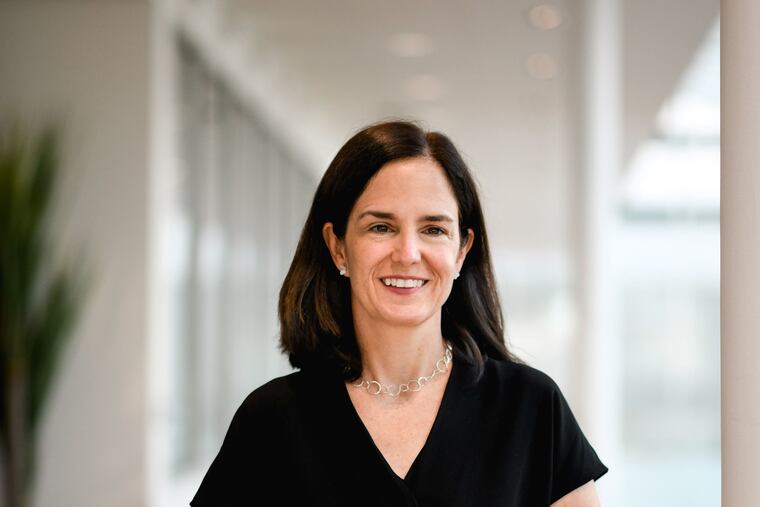Breast cancer, genetics and the milestone that keeps bringing hope closer
The tremendous amount of research, innovation and collaboration over the past 25 years has led us to a better understanding of the steps people can take to detect cancers early or prevent them altogether.

October has become synonymous with the color pink and the push for breast cancer awareness. But 2019 represents a specific milestone in the fight. It’s 25 years since the BRCA1 gene was cloned — a milestone that accelerated cancer research and opened a new path for exploration in cancer prevention and treatment.
In the quarter-century since, we’ve made significant strides in understanding the function of these genes and the cancer risks associated with mutations. Entire fields of research and science have been created — research and treatments that would not exist if not for that milestone. Perhaps even more remarkable is how quickly the field has uncovered solutions that are saving lives. From understanding the way that BRCA1 works in the cell, to FDA-approved therapies for BRCA1/2 mutation-associated breast and ovarian cancers, researchers and clinicians have translated research into information that can improve the lives of individuals with BRCA mutations.
» READ MORE: Beyonce’s dad, Mathew Knowles, has hereditary breast cancer. What we know about BRCA genes.
BRCA1 and BRCA2 are genes we all have. When they are functioning normally, they help repair DNA damage in cells. But when someone inherits a bad copy of BRCA1 or BRCA2 (called a mutation), there is an increased risk of cancer. Women with BRCA mutations have a high risk of breast cancer which can be up to 70% for those up to age 80. The risk of ovarian cancer is up to 45% for BRCA1 mutation carriers and 20% for BRCA2 mutation carriers.
While people commonly refer to BRCA as “the breast cancer gene,” men are not spared: male carriers — particularly with BRCA2 mutations — have an increased risk of male breast cancer and aggressive prostate cancer. Both men and women with the mutations have an increased risk of pancreatic cancer. Importantly, both men and women have a 50% chance of passing the mutation on to their children.
The tremendous amount of research, innovation, and collaboration over the last 25 years has led us to a better understanding of the steps people can take to detect cancers early or prevent them altogether. Screening with breast MRI in addition to mammogram is an option for women, as is preventative removal of the breasts. Preventative removal of the ovaries massively reduces the risk of ovarian cancer and helps women live longer. Men can be screened early for prostate cancer.
Individuals who have BRCA1/2 mutations and advanced cancer may benefit from specific medications called PARP inhibitors to help treat their cancers. For all of these reasons, identifying people with BRCA1 and BRCA2 mutations through genetic testing is crucial. As many as 90% of BRCA1/2 mutation carriers do not know their status.
» READ MORE: Giving birth at a young age helps protect women from breast cancer. Could a drug mimic that effect?
BRCA1 and BRCA2 mutations are found in all races and ethnicities. There are a number of risk factors that make a mutation more likely, including a personal or family history of multiple cases of breast cancer, breast cancer at an early age, a specific type of breast cancer called triple negative breast cancer, ovarian cancer, male breast cancer, pancreatic cancer, or metastatic prostate cancer. Individuals who are of Ashkenazi Jewish descent, for example, are more likely to have a BRCA1/2 mutation: 1 in 40 has one of three specific BRCA mutations. Because these mutations are so common in this population, the threshold for testing is very low and there is an ongoing study offering free BRCA testing to anyone of Ashkenazi Jewish ancestry (bforstudy.com).
Still, other minority groups are vastly under-tested, specifically Latinx and African Americans. This under-testing means that with the same personal or family history of cancer, fewer individuals in these populations undergo testing compared with whites. African Americans are more frequently diagnosed with triple negative breast cancer, and genetic testing needs to be discussed. There appears to be many reasons for this — from a lack of discussion with one’s health-care provider, to a misunderstanding of the cost of testing (usually covered by insurance if there are risk factors for BRCA mutation), and confusion and mistrust regarding genetics. Whatever the reason, disparities in testing are a significant problem because they lead to missed opportunities for early detection and prevention.
Twenty-five years ago, there was much we did not know and a limited ability to detect, prevent, and treat BRCA-related cancer. We have made so much progress, but we need to continue pushing forward. We need to keep having the sometimes difficult conversations with our family members to understand our family history and our individual risks. The medical community needs to do more to identify and remove barriers to access. And in the lab, we need support to continue breaking ground with innovative research. From all sides, we need to do more in order to lessen the impact of BRCA mutations. But, at the same time, because of the immense amount of progress of these last 25 years, I am incredibly hopefully about the next 25.
Susan M. Domchek is the executive director of Basser Center for BRCA at the Abramson Cancer Center of the University of Pennsylvania.